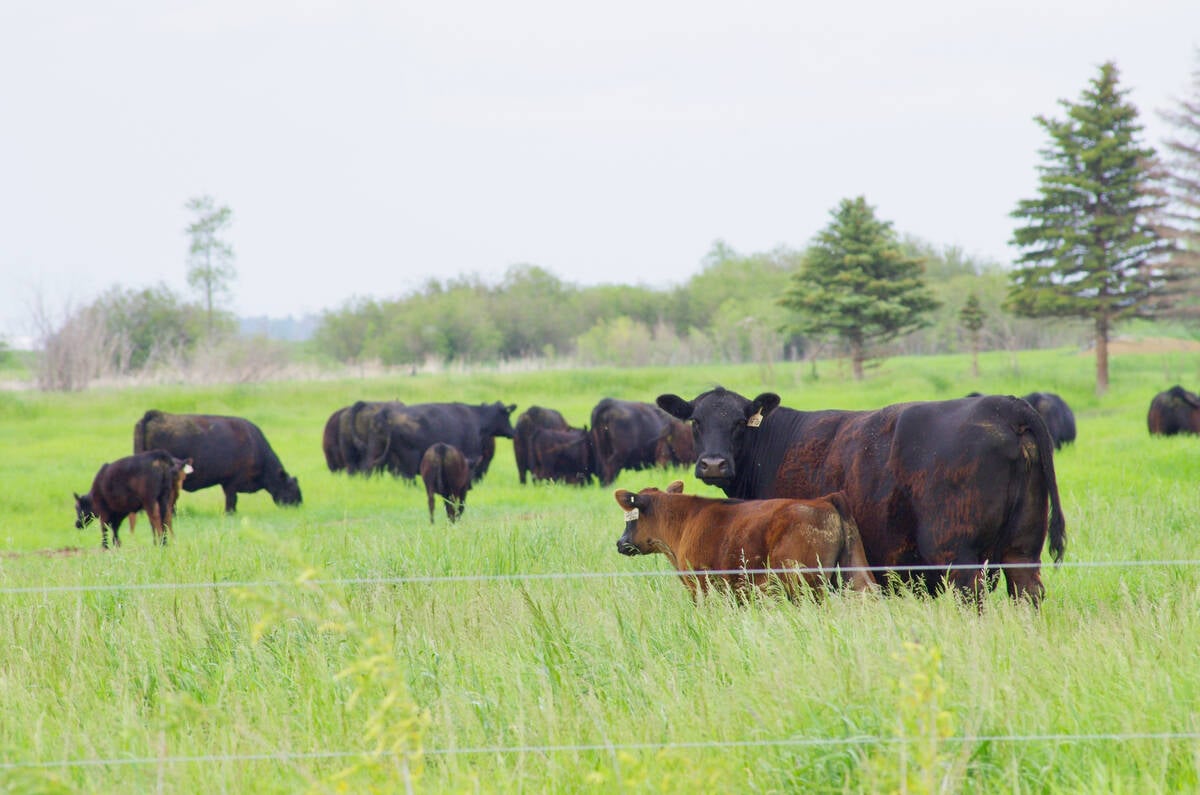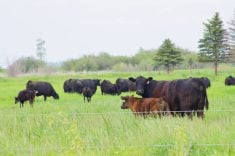A smart rumen bolus gathers information such as internal temperature, water intake and whether cows are in heat
Beef producers who rely on educated guesses to manage their cattle can now get real-time data from smart devices permanently placed inside their animals.
“They’re handy for all kinds of different functions,” said Wyatt Cook of Buck Lake Ranch, southeast of Kelowna, B.C. “I mean, that’s kind of going to be the future of monitoring your cattle.”
Cook is the sole North American distributor of the smart rumen bolus by Moonsyst International Ltd. It can gather data from inside the reticulum of cattle about conditions ranging from internal temperature and water intake to whether cows are in heat.
Read Also

Tick research from the University of Manitoba focuses on insects and testing
Manitoba researchers are looking into the effects of tick and fly disease in cattle.
The information is processed via the internet on cloud-based servers using computer technology, with the results sent to a mobile app. Producers can even receive smartphone push notifications or email alerts warning about changes in temperature or activity rate of their cattle, said Cook.
Improved traceability is another potential use, by providing a record of movement from ranches through the supply chain to packing plants, he said.
“I think consumers want to know where their food’s coming from. That’s the main thing, and how their animals have been treated.”
Each bolus has a unique ID associated with individual animals, said a statement by Moonsyst International. The shell of the device is made of an acid-proof resin that protects the electronic parts while causing no harm to cattle, it said.
Data can be transmitted to the cloud via satellite or through cellular networks, said Cook. It can also be sent via a wi-fi gateway, which is a combination modem/router that is typically installed in barns to provide coverage over a wide geographical area.
The capsule-shaped boluses, which are 3.2 centimetres wide and 10 cm long, weigh about 200 grams and cost $149, said Cook. They are being used at his ranch as part of a research project involving John Church, B.C. regional innovation chair in cattle industry sustainability at Thompson Rivers University in Kamloops.
The project seeks to breed cattle that are more resistant to temperature extremes caused by climate change. The boluses help provide accurate data on how the animals respond to different conditions.
Cook said the devices have separately been adopted by scientists at institutions ranging from the University of Saskatchewan, Lakeland College and the University of Montana. Church said he was particularly impressed by the longevity of the bolus, which is designed to last about five years, as well as the geographical range over which it can transmit data.
“If you get a research tool that works as well as these boluses do, then they get adopted pretty quickly, so I think this is one tool in the toolbox … that I think will be indispensable and help us monitor things like heat stress in cattle into the future.”
Cook said although other companies sell boluses, “some of them just lack the distance, so you can only get readings within 100 metres where we’re getting 500 metres.”
Moonsyst International’s device also contains a three-axis accelerometer that gives a general sense of cattle activity level, said Church.
Cook was initially skeptical about the boluses “because sometimes you read about a lot of things, and then you put them into real practice and it doesn’t pan out.”
He was away from his ranch when he received an alert that his herd’s water intake had declined during a particularly warm day last fall.
“So, I called my hired man and lo and behold, there was some manure in the water, so they didn’t want to drink, so we just cleaned the water and then they started drinking again.”
The boluses can help predict and send alerts on the optimal window for insemination and warn about calving events hours and even days in advance, said the statement. They can also warn of health concerns to enable timely treatment, resulting in reduced antibiotic use, the company said.
“Alerts or push notifications have the potential to be farmers’ best friends in herd management. The algorithms and artificial intelligence make alerts possible by continuously monitoring your cow’s data.”
Besides the smart rumen bolus, Moonsyst International has a bolus costing $399 that is guaranteed for about 90 days, said Cook. It records changes in rumen pH levels and is mostly aimed at dairy operations or feedlots that are trying a new feed ration and at researchers studying changes in feed, he said.


















